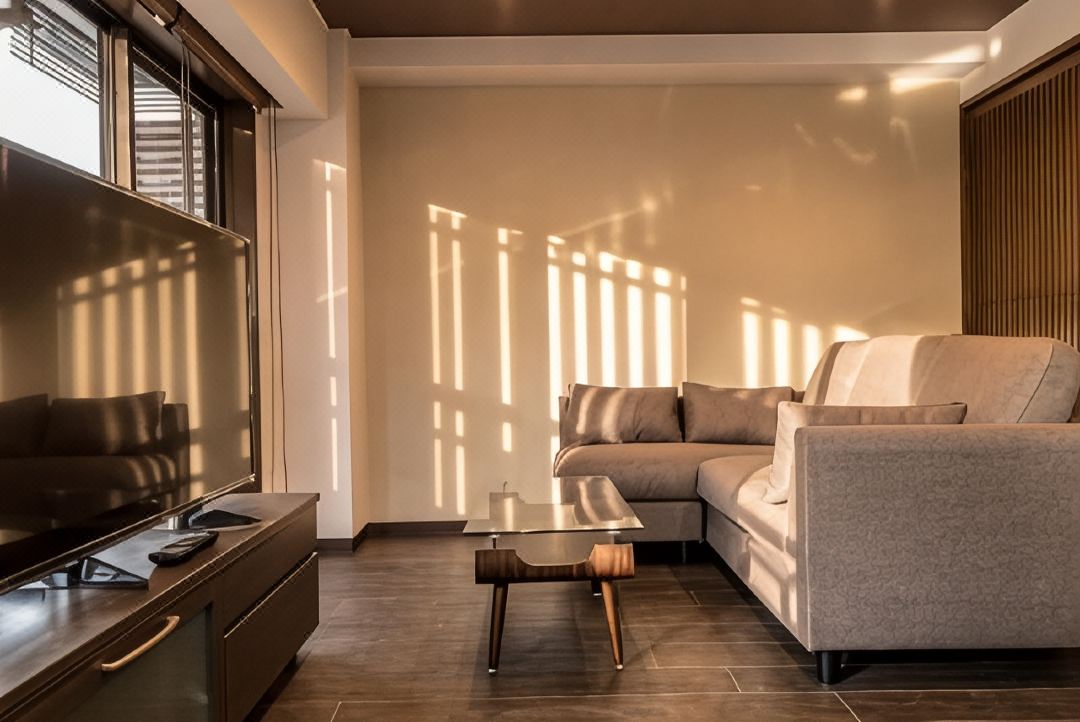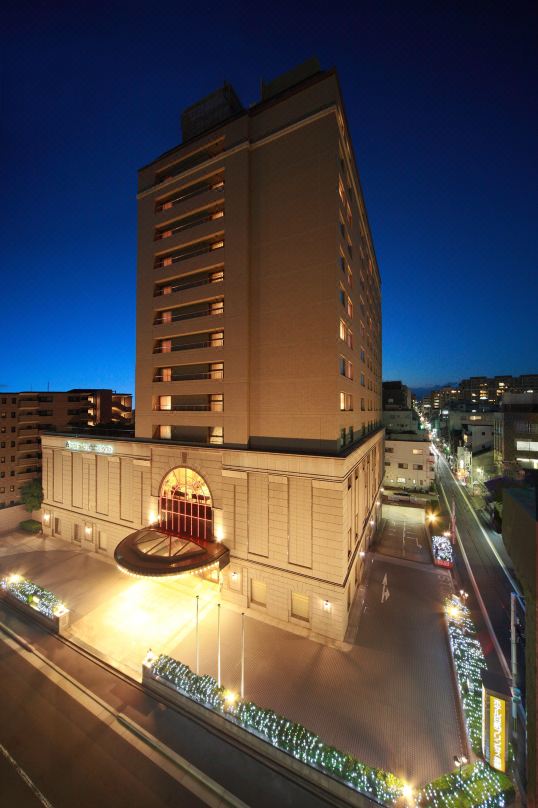Kyoto: 15 Must-Visit Temples and Shrines

This guide features 15 famous temples and shrines in Kyoto, including Kinkakuji (Golden Pavilion), Kiyomizudera Temple, Fushimi Inari Taisha Shrine, and the Byodoin Phoenix Hall.
Kyoto's Most Beautiful Temples and Shrines
Kyoto, the capital of Japan between 794 and 1868, is famous for its historic Buddhist temples and Shinto shrines. Kiyomizudera Temple, Kinkakuji (Golden Pavilion), and Toji Temple are just some of the monuments that have been registered as UNESCO World Heritage.
Read on to learn about 15 temples and shrines in Kyoto that should not be missed.
15 Famous Shrines and Temples in Kyoto
1. Kinkakuji (Golden Pavilion)
2. Fushimi Inari Taisha
3. Kiyomizudera Temple
4. Ginkakuji (Silver Pavilion)
5. Toji Temple
6. Ryoanji Temple Zen Garden
7. Tenryuji Temple (Arashiyama)
8. Yasaka Shrine (Gion)
9. Heian Jingu Shrine
10. Tofukuji Temple
11. Rurikoin Temple
12. Kitano Tenmangu Shrine
13. Eikando Temple
14. Byodoin Phoenix Hall
15. Yokokuji, the Flower Temple
Other Travel Tips
Getting to and around Kyoto
Weather, Climate, and What to Wear in Kyoto
Book the JR Pass for Whole Japan (7, 14, or 21 Days)
Book Shinkansen tickets for Kyoto
1. The Iconic Kinkakuji (Golden Pavilion)

Photo by Pixta
Kinkakuji, known for its Golden Pavilion, is officially called Rokuonji. This Zen Buddhist temple located in the northern area of Kyoto City was built as a resort for shogun Ashikaga Yoshimitsu (1358-1408) in 1397.
The Sansorokaku Golden Pavilion, which is the reliquary hall for worshipping the Buddha, is covered in gold leaf; it creates a surreal reflection when viewed from across the lake. Kinkakuji is a must-visit for anyone going to Kyoto. For details, please refer to the official website of Kinkakuji Temple.
Hotels near Kinkakuji Temple (Golden Pavilion)
↑ Return to the top of article.
2. Fushimi Inari Taisha: Climb Up Through the Thousand Torii Gates

Photo by Pixta
Fushimi Inari Taisha is the head shrine of the 30,000 Inari shrines throughout Japan. The deity Inari has been worshipped as the protector of business prosperity and abundant crops. The distinctive feature of Inari shrines are the white fox statues guarding the entrance. White foxes are considered to be the sacred messengers of the Inari deity.

Photo by Pixta
The tunnel formed by the several thousand torii shrine gates looks like a corridor leading to another world. The torii gates have been donated to the shrine by worshippers over the years. Please visit the official website of Fushimi Inari Taisha for details.
Hotels near Fushimi Inari Taisha Shrine
↑ Return to the top of article.
3. Kiyomizudera Temple

Photo by Pixta
Kiyomizudera Temple was established in 778 and is dedicated to Kannon, the Buddhist deity of Mercy. The temple is best known for its wooden platform called Jigokudome, which provides a panorama of Kyoto.
Along with Kinkakuji, Kiyomizudera is one of the 17 Historic Monuments of Ancient Kyoto registered as UNESCO World Heritage.
The temple grounds are located on the foothills of Mt. Otowa and are home to the Otowa Falls, whose pure waters ("kiyomizu") are said to bring longevity and blessings in education and relationships. For detailed information, please visit the official website of Kiyomizudera Temple.
Hotels near Kiyomizudera Temple
↑ Return to the top of article.
4. Ginkakuji Temple, the Silver Pavilion

Ginkakuji, known as the Silver Pavilion, is officially called Jishoji Temple. Originally a mountain retreat of shogun Ashikaga Yoshimasa (1436-1490), it became a Zen temple.
The Silver Pavilion houses the Kannon-den, a hall where the Kannon Boddhisatva of Mercy is enshrined. This hall is a national treasure. Ginkakuji is also famous for its splendid Japanese garden with an observation deck providing views of the temple grounds.
White sand is piled up forming a stairlike structure called Ginshadan in front of the abbot's chamber. It is thought that, together with the cone-shaped Kogetsudai, the Ginshadan was meant to reflect the moonlight.
Ginkakuji has a simple and understated appearance in comparison to the golden Kinkakuji. This temple represents the spirit of the Higashiyama culture, which flourished around the beginning of the 16th century and inspired the subdued aesthetics of tea ceremony. Please visit the official website of Ginkakuji Temple for detailed information.
Hotels near Ginkakuji (Higashiyama Jishoji Temple)
↑ Return to the top of article.
5. Toji Temple and the Five-Storied Pagoda

Toji Temple was established in 794, right after the capital was moved to Heiankyo (Kyoto), as the temple protecting the eastern side of the capital. After 823, it became the head temple of the Shingon school of Buddhism, an esoteric sect that had been established by the prominent Buddhism monk Kukai (774-835). Its official name is Kyoo Gokokuji Temple.
The wooden Five-Storied Pagoda has been originally built in 826. It has burned down four times over the centuries in fires that ravaged the city. The current pagoda dates from 1644.
Inside the pagoda, there is a hall enshrining a statue of the Dainichi Nyorai Buddha and a rare three-dimensional mandala. This hall is not open to the public. For details, please visit the official website of Toji Temple.
Hotels near Toji Temple
↑ Return to the top of article.
6. Ryoanji Temple and Zen Garden

Photo by Pixta
Ryoanji Temple, established in 1450, is best known for its karesansui garden, a Japanese dry garden with a landscape created only with sand, pebbles, and rocks. The original creator of this garden is unknown.
There are 15 rocks in the garden but, no matter what angle you're viewing it from, they won't all be visible at the same time; this phenomenon inspires visitors to think about the limits of human perception. For details, please refer to the official website of Ryoanji Temple.
Besides the sand garden, there is also a pond on the temple grounds called Kyoyochi, or Mirror Pond. This pond is surrounded by greenery and seasonal flowers.
Hotels near Ryoanji Temple
↑ Return to the top of article.
7. Tenryuji Temple in Arashiyama: The Cloud Dragon Painting

Photo by Pixta
Tenryuji Temple in Arashiyama was established by shogun Ashikaga Takauji in 1339. It is a Zen temple of the Rinzai school.
The Sogenchi Pond Garden, created by the Zen monk Muso Soseki, has been designated a Site of Special Historic and Scenic Importance by the Japanese Government. It is a shakei-style garden, which borrows the view of the mountains in the distance to create a landscape with depth. The path surrounding the pond allows visitors to enjoy the view from different perspectives.

©JNTO
The Hatto main hall is famous for the Cloud Dragon (Unryu) painting on its ceiling. This painting dates back to 1997 and is the work of Nihonga artist Kayama Matazo (1927-2004). The eyes of the dragon are designed in the happo nirami style, in which they seem to be looking back at the viewer from every angle.
The Cloud Dragon painting can be viewed only on weekends and holidays. For more information, please refer to the official website of Tenryuji Temple.
Hotels near Tenryuji Temple
↑ Return to the top of article.
8. Yasaka Shrine

Photo by Pixta
Yasaka Shrine, located in Kyoto's Gion district, is dedicated to the Shinto deity couple Susanoo and Kushinadahime. It is a popular destination for those who wish to pray for blessings in marriage and relationships.
The shrine is believed to have been founded in the seventh or ninth century. The vermillion main shrine is built in a special style called Gion-zukuri and is a designated national treasure.
Kyoto's famous Gion Festival held every year during the month of July is the festival of Yasaka Shrine. For more information, please visit the official website of Yasaka Shrine.
Hotels near Yasaka Shrine
Read also
↑ Return to the top of article.
9. Heian Jingu Shrine

Photo by Pixta
The Heian Jingu Shrine was established in 1895 to celebrate 1100 years since the capital of Japan had been moved to Heiankyo (Kyoto).
By 1895, the capital had already been relocated to Tokyo. This shrine was built in an attempt to make Kyoto a vibrant city once more. The main building is a vermillion hall modeled after the Chodoin, which had previously been the center of government affairs in Heiankyo.
The area around Heian Jingu Shrine is a famous cherry blossom spot. Visitors can enjoy cherry blossom viewing boat rides along the river nearby.
Hotels near Heian Shrine
↑ Return to the top of article.
10. Tofukuji Temple

Photo by Pixta
Tofukuji Temple was completed in 1255 after 19 years of construction. It is known as the largest garan (a compound of temple buildings where monks gather and train) in Kyoto.
Tofukuji is famous for its gardens and especially as a fall foliage location. The Tsutenbashi Bridge in the Hojo Garden offers the best views in autumn.
Tofukuji can be reached in about 10 minutes from Kyoto Station by taxi. It is relatively close to Fushimi Inari Taisha.
Hotels near Enichizan Tofukuzenji Temple
↑ Return to the top of article.
11. Rurikoin Temple

Photo by Pixta
Rurikoin Temple, officially called Komyoji, is located in the eastern area of Kyoto, at the foot of Mt. Hiei.
The azure color of lapis lazuli (“ruri”) is considered the color of the Pure Land in Buddhism. The temple became known as Rurikoin because of its beautiful garden with maple trees and moss that evokes the brilliance of lapis lazuli.
Rurikoin Temple is famous for how the garden scenery is reflected by the lacquered desks in the temple. Whether it's the emerald green of the fresh foliage or the warm, gorgeous colors of the fall foliage, many people visit the temple to take pictures of this view.
Please be aware that the Rurikoin Temple cannot be visited in June. To access Rurikoin, take the Karasuma Line to Kokusaikaikan, then the Kyoto city bus no. 19 headed for Ohara and get off after approx. 12 minutes at the Yase Ekimae stop. Rurikoin can be reached in about 10 minutes on foot from here. For details, please visit the official website of Rurikoin Temple (Japanese).
Hotels near Rurikoin Temple
↑ Return to the top of article.
12. Kitano Tenmangu Shrine

Photo by Pixta
Kitano Tenmangu Shrine is the head shrine of all the 12,000 Tenmangu Shrines across Japan. The Tenmangu Shrines are dedicated to Sugawara no Michizane (845-903), a Heian Period scholar and poet worshipped as the guardian deity of education.
Kitano Tenmangu Shrine was established in 947 and is visited by millions of students due to being known to be effective for passing entrance exams. There are several cow statues on the premises, associated with the shrine's guardian deity. It is believed that if you rub one of the cow statues, you will receive good fortune.
This shrine is also famous for its plum tree garden with about 1,500 plum trees of 50 varieties. This garden is open from early February to late March and is a prime location for viewing plum blossoms.
Hotels near Kitano Tenmangu Shrine
↑ Return to the top of article.
13. Eikando Temple

Photo by Pixta
Eikando Temple, officially called Zenrinji, was built in 863 and is located in the eastern area of Kyoto. It enshrines a rare Buddhist statue called Mikaeri Amida Nyorai (Amitabha Looking Back). While Buddhist statues usually face forward, this figure of Amitabha has its head tilted to the side as if it were looking back.
Eikando is particularly famous for its fall foliage and autumn illuminations.
Hotels near Eikando (Zenrinji Temple)
↑ Return to the top of article.
14. Byodoin Temple and Phoenix Hall

Byodoin Temple (Phoenix Hall) in Uji, south of Kyoto, is a Buddhist temple founded by Fujiwara no Yorimichi in 1052.
The Phoenix Hall has been built to emulate Amitabha’s Pure Land. It is an absolutely beautiful structure set on an island in the pond. The interior of the Phoenix Hall is open to visitors.
The Byodoin Temple Museum Hoshokan is home to exquisite works of Buddhist art, some dating back to the Heian (794-1185) and Kamakura (1185-1333) periods. For details, please visit Byodoin's official website.
Hotels near Byodoin Temple (Phoenix Hall)
↑ Return to the top of article.
15. Yokokuji, the Flower Temple

Photo by Pixta
Yokokuji Temple, also known as the Yanagidani Kannon, was founded in 806 and enshrines a sacred statue of the Eleven-Faced Kannon Boddhisatva. It has gathered a large following as a place where those with eye ailments pray for healing.
In the temple garden, nature and Buddhist imagery combine to create a scene of rare beauty. Yokokuji is known as a flower temple due to the splendid seasonal flowers that grace its vast precincts, from cherry blossoms in spring to hydrangeas in June-July, and fall foliage in November.
There are several buildings on the temple grounds, connected by passageways, staircases, and alleys. The Kamishoin houses a tea ceremony room with a panoramic view of the main hall and the garden.
Yokokuji Temple can be reached by taxi in 10 minutes from Hankyu Nishiyama-Tennozan Station or in 15 minutes from JR Nagaokakyo Station.
↑ Return to the top of article.
Getting to and around Kyoto

Kyoto can be reached in about two and a half hours from Tokyo by bullet train (Shinkansen). From Osaka, you can reach Kyoto in about 30 minutes on a JR special rapid train.
The city of Kyoto is laid out in a grid pattern, so it's easy to find your way around. While in Kyoto, we recommend traveling around by subway and bus.
Book the JR Pass for Whole Japan (7, 14, or 21 Days)
Book Shinkansen tickets for Kyoto
Read also
↑ Return to the top of article.
Weather, Climate, and What to Wear in Kyoto
Kyoto is located in a basin, surrounded in three directions by mountains. As a result, the city is hot and humid in the summer, and very cold in the winter.
The average temperature in the summer is around 27 degrees Celsius (80°F), but it can reach up to 38 degrees Celsius (100°F) at times. You can count on the air conditioner inside most buildings, but if you're planning on exploring the city, it would be a good idea to wear a hat, have a towel at hand, and use a fan or an electric fan.
During the fall foliage season in November, the average temperature is around 18.5 degrees Celsius (65.3°F) and most days have clear weather. We suggest wearing a short-sleeve shirt and a light cardigan, or a sweater and jacket in late fall.
The average temperature in winter is about 5 degrees Celsius (41°F). The coldest month is January when the lowest temperature can reach 2 degrees below zero (28.4°F). You'll want to wear a down jacket or coat and don't forget your mittens, scarf, and other cold-preventing wear.
During the cherry blossom season in spring, is about 15 degrees Celsius. You'll be comfortable in a long-sleeved shirt and a vest or cardigan.
Read also
↑ Return to the top of article.
Enjoy Exploring Kyoto
If you can spend only a limited time in Kyoto, use our recommendations above as a reference and visit some of the historic temples and shrines that this city is famous for. Each one of them offers invaluable cultural insights that will deepen your understanding of Japan and its history.
Read also
Main image by Pixta
日本への訪日外国人の方が、もっと増えますように!
















































































































